本文是我在上UCSD的 CSE 120: Principles of Operating Systems (Winter 2020) 整理的笔记,这一课主要介绍了分布式系统中最基础的一些概念的方法。
Basic
What is a distributed system?
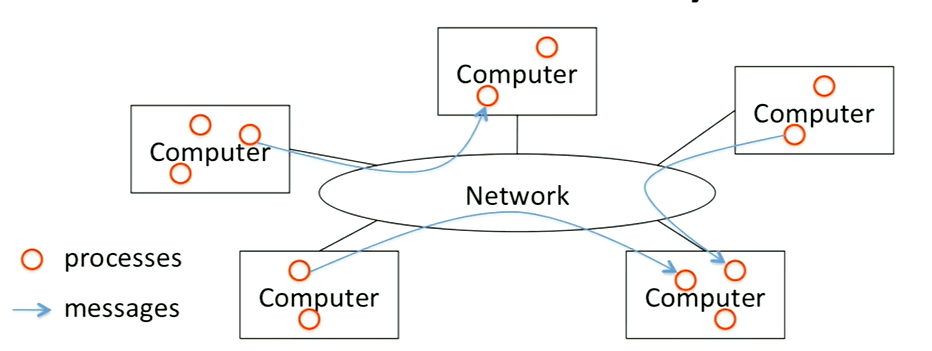
- Cooperating processes in a computer network
Degree of integration
- Loose: Internet applications, email, web browsing
- Medium: remote execution, remote file systems
- Tight: process migration, distributed file systems
Advantage
- Speed: parallelism, less contention
- Reliability: redundancy, fault tolerance, “NSPF”
- Scalability: incremental growth, economy of scale
- Geographic distribution: low latency, reliability
Disadvantages
Fundamental problems of decentralized control
- State uncertainty: no shared memory or clock
- Action uncertainty: matually conflicting decisions
Distributed algorithms are complex
Is distribution better?
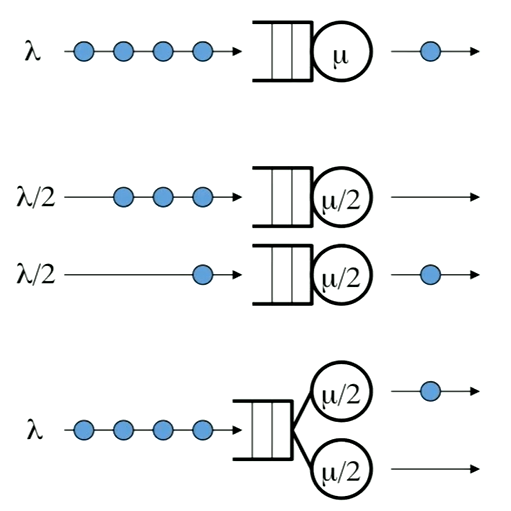
- Single fast server with single queue
Multiple slower servers with separate queues
- Typically better than the first one
Multiple slower servers, single queue
- Better than the first two
Little’s Law: $N = \lambda W$
- Use to calculate processing time (assuming stable)
Models used in cooperating system
The Client/Server Model
Client
- Short-lived process that makes requests
- “User-side” of application
Server
- Exports well-defined requests/response interface
- Long-lived process that waits for requests
- Upon receiving request, carries it out (may spawn)
Peer-to-Peer
A peer talks directly with another peer
- No intermediary (e.g., central servel) involved
- Symmetric (unlike asymmetric client/server)
In actuality, may be dynamic client/server
- A requests file from B; A acts as client, B as server
- C can now request file from A; A acts as server
Distributed Algorithms
Event ordering
- Order events given no shared clock/memory
Happened-before relations: $\rightarrow$
- A, B events in same process and A before B: $A\rightarrow B$
- A is a send event, B is a receive event: $A\rightarrow B$
- If $A\rightarrow B$ and $B\rightarrow C$, then $A\rightarrow C$
Implementation
- Timestamp all events based on local clock
- Upon receiving a message, advance local clock
- Resolve ties by ordering machines
Example
Example 1 (When timing conflicting, follow rules above):
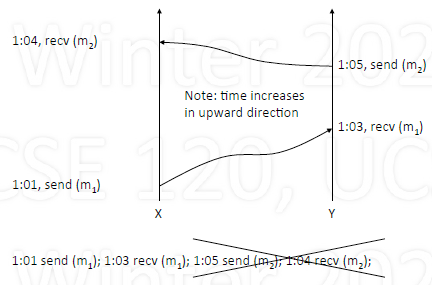
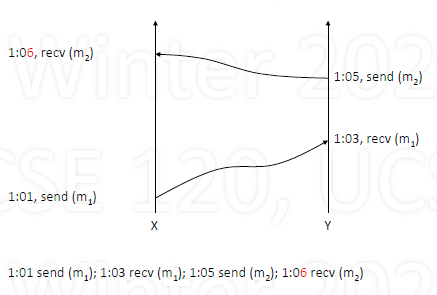
Example 2:
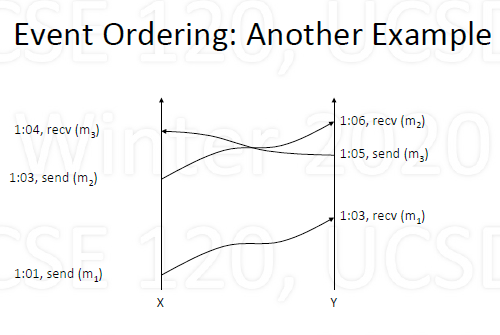
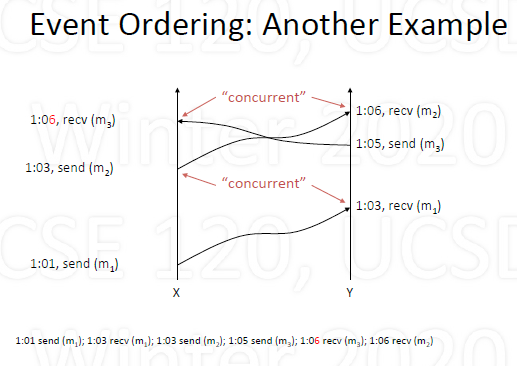

Leader election
- Many distributed algorithms rely on leader
- Need to determine if leader exists; if not elect
Bully algorithm (elect leader L)
- Every process is numbered (priority): P1, P2, …
- $P_j$ sends request to L, no reply; tries to elect itself
- $P_j$ sends “Can I be leader?” to all $P_{k>j}$
- No replies, $P_j$ sends to all $P_{i<j}$, “I am leader”, done
- If some $P_{k>j}$ replies, $P_j$ let $P_k$ try to elect itself
- If no message from $P_k$, $P_j$ tries to elect itself again
Mutual exclusion
Centralized approach
- Single process acts as coordinator server
- Request, reply (to allow entrance), release
Distributed approach
- Process sends time-stamped request to all others
- Waits until it receives replies from all (ok to other)
- Enter critical section (may get requests, defers)
- Upon exiting, responds (to release) to all deferred
- Use timestamps to order “simultaneous” requests